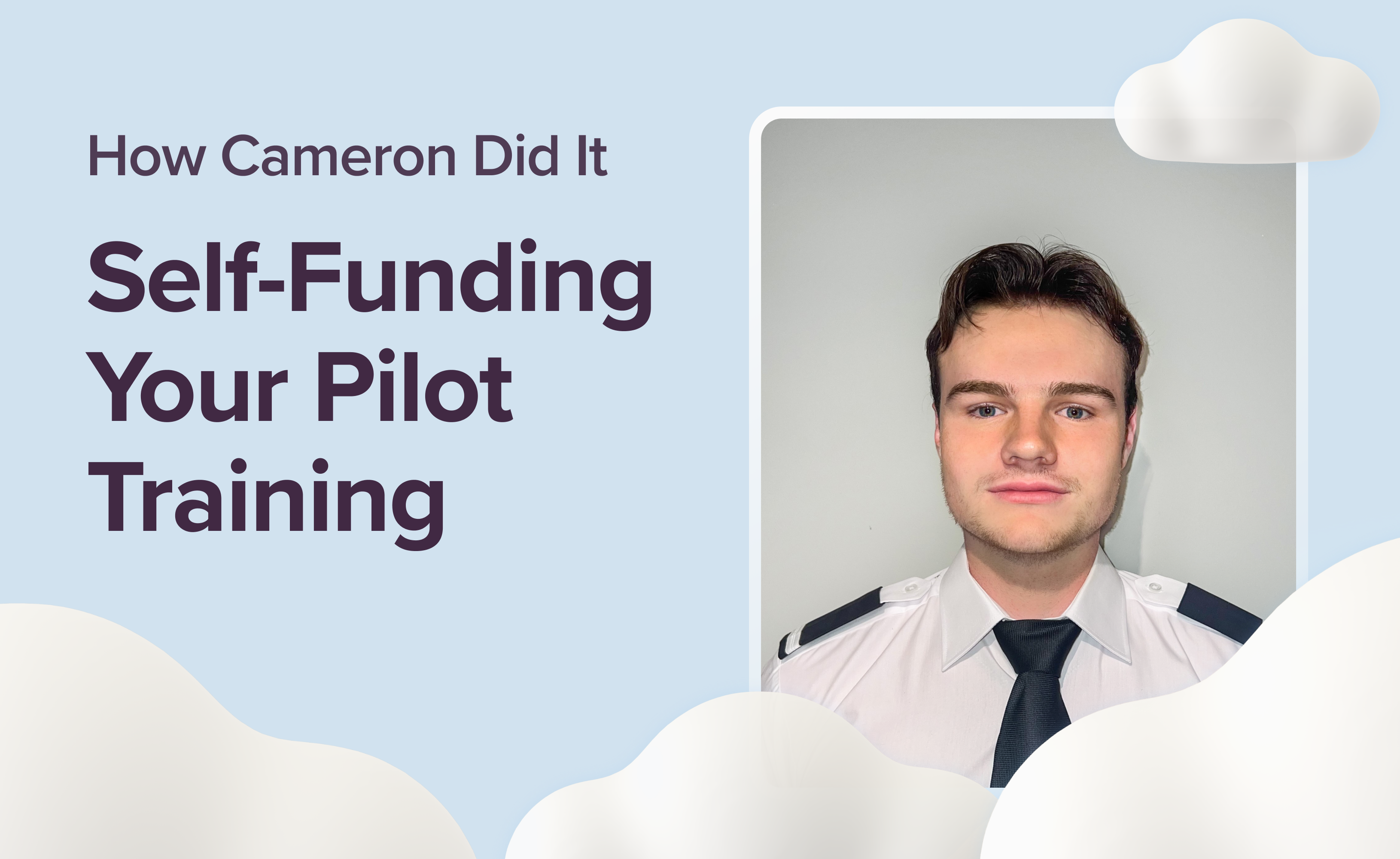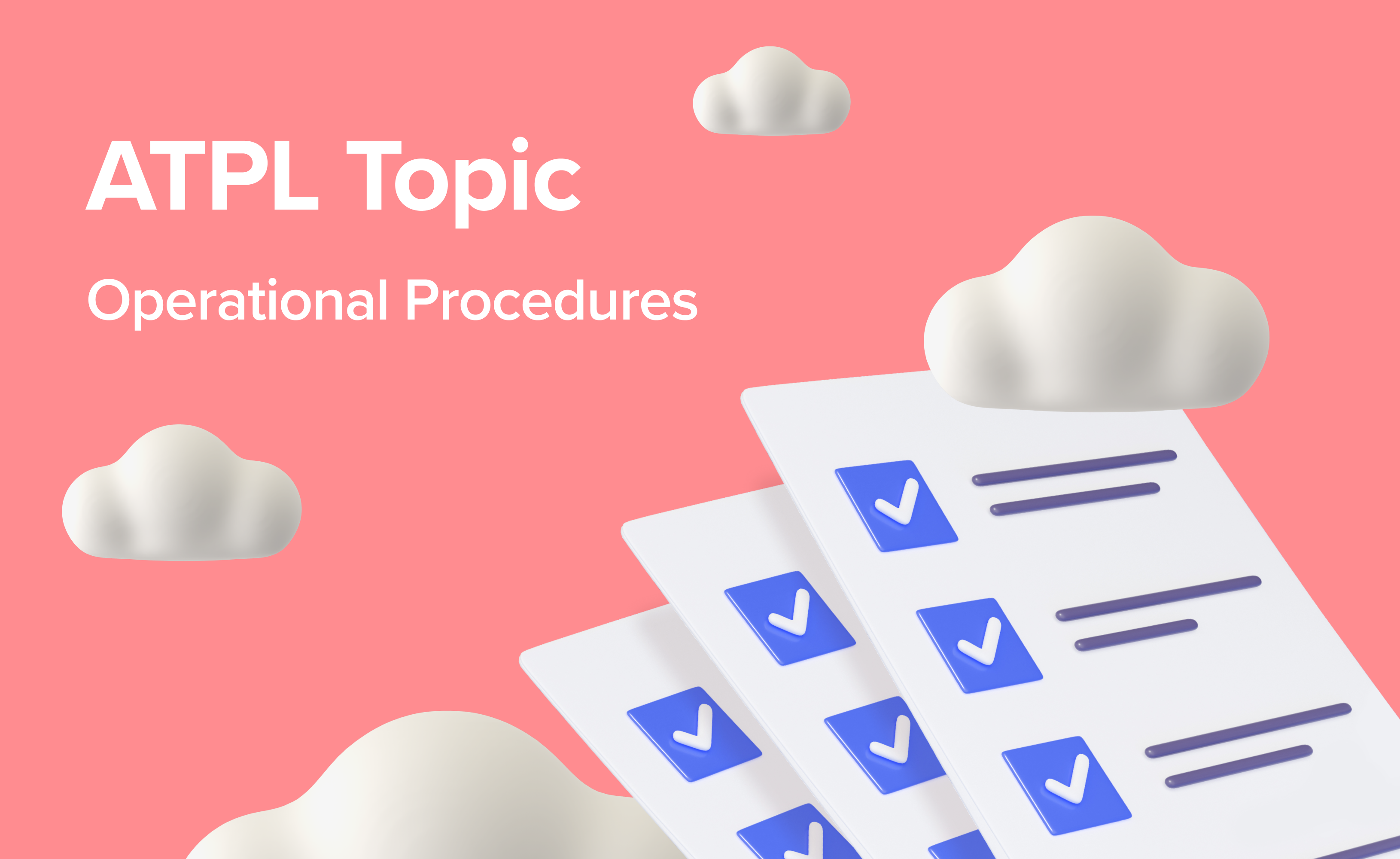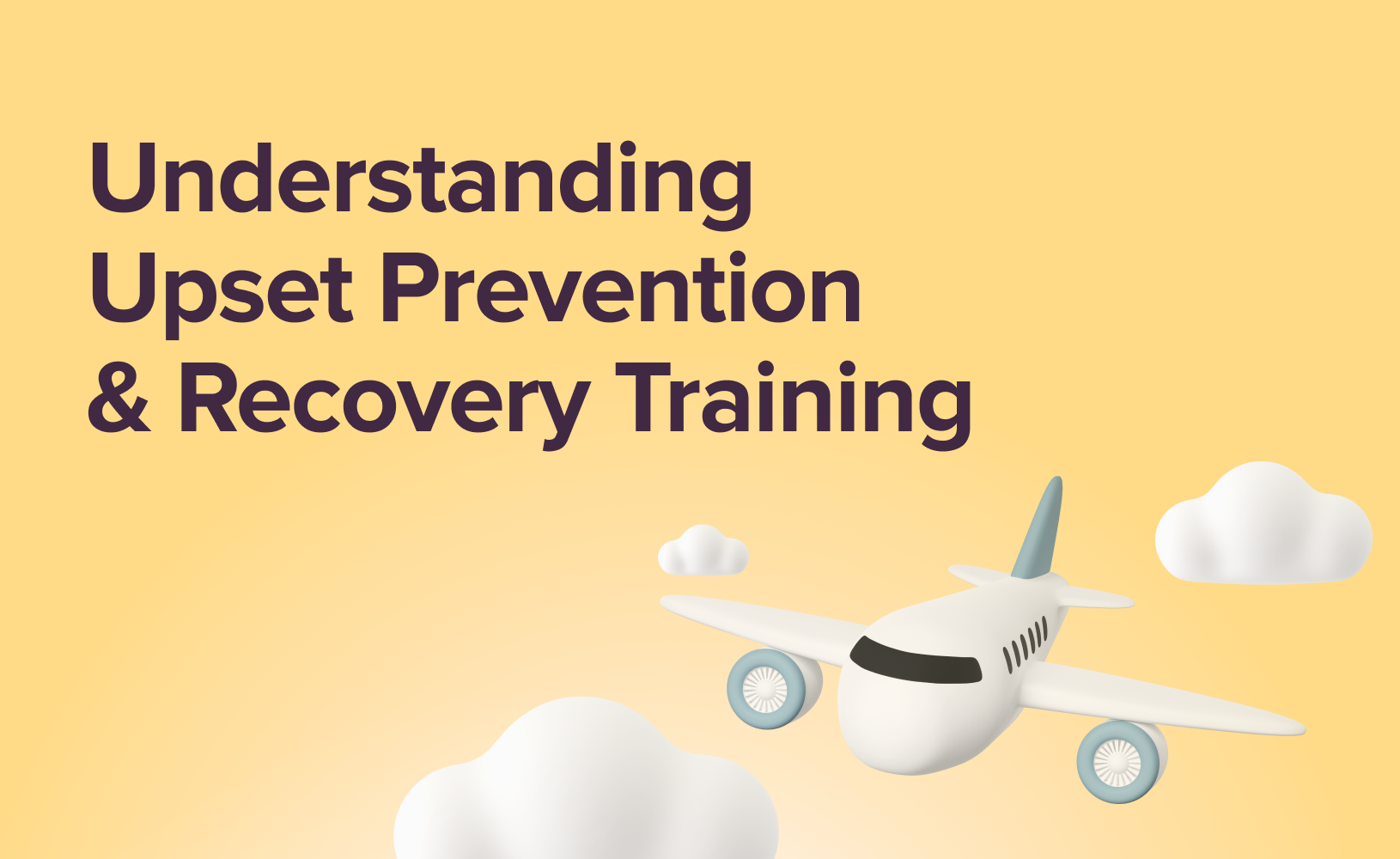Checklist Challenge: 11 Things to Focus On Before Your Checkride

A checkride is a defining moment in your journey as a pilot — a chance to showcase the skills you’ve worked so hard to develop. But let’s be honest: the nerves are real, especially for first-timers. The good news? Thousands of pilots have faced the same challenge, and their experiences offer valuable lessons to help you prepare.
Whether you’re working toward your Private Pilot Licence (PPL), Commercial Pilot Licence (CPL), or Instrument Rating (IR) in Europe or the UK, the checkride is your gateway to achieving a major milestone in your aviation career. This blog is here to guide you with actionable advice and a structured approach so you can walk into your checkride confident and ready to succeed. Let’s make sure you’re fully prepared for the big day!
Know the Checkride Inside and Out

Firstly, you should learn every detail about your checkride process, including all its stages and requirements. Understanding what’s ahead eliminates uncertainty and helps you prepare strategically. The good news? Typical pass rates for first attempts are high — often above 90%. With proper preparation, you’re already in a great position to succeed.
Your instructor plays a crucial role in ensuring you’re ready for the checkride. They won’t recommend you unless they’re confident in your abilities, so trust their judgment and feedback. Use your training flights to solidify skills, clarify doubts, and gain confidence.
A checkride consists of two parts: the oral exam and the practical flight test.
Oral exam tests your knowledge of flight planning, regulations, weather, aircraft systems, and emergency procedures. Examiners expect concise, accurate answers, so avoid rambling. Stay focused, and don’t hesitate to ask for clarification if you don’t understand a question.
During the oral exam, you won’t be expected to memorize and know everything. Instead, focus on categorising information:
Must-Memorise Items: Essential knowledge like emergency procedures, radio calls, and airspace classifications.
Know and Understand: Concepts that require a solid grasp, such as interpreting weather codes and non-critical regulations.
Look-Up Information: Topics that can be referenced during the exam, like specific technical details or less critical regulations.
Practical test involves demonstrating your flying skills in real-world scenarios. Expect tasks like takeoffs, landings, navigation, and handling emergencies.
Examiners in the UK and Europe are typically EASA or CAA-approved professionals. Their role is to evaluate, not intimidate—they want to see you succeed. They’ll guide you through each step of the process, ensuring the standards are met while providing a fair and professional assessment.
Weather

Weather knowledge may not seem as thrilling as flying itself, but it’s an essential skill that examiners will test thoroughly. From decoding METARs and TAFs to interpreting AIRMETs, SIGMETs, and Winds Aloft charts, weather-related questions often trip up students. Weather reports and forecasts are among the densest and most detail-heavy areas of aviation knowledge. Therefore, this area requires focused study and reinforcement.
Master METARs and TAFs. Break them into sections and practice decoding each part until it becomes second nature. For instance, practise identifying wind direction, visibility, and cloud layers quickly.
Focus on the AIRMETs and SIGMET format and the conditions they represent. Knowing when hazardous weather might affect your route is critical for safety and is a common checkride topic.
Use live weather data to plan mock flights and practise real scenarios. Think through how changing conditions — like worsening visibility or turbulence — impact your route or decision-making.
Enhance your flight training with these 14 essential apps. Read Digital Flight Bag: 14 Handy Apps for Student Pilots.
Airspace

Airspace can feel like an intimidating puzzle of rules, restrictions, and requirements, but it’s a cornerstone of safe and compliant flying. Examiners love to pose “what if” scenarios to test your understanding, such as:
What clearance is required to enter controlled airspace?
What are the visibility and cloud clearance requirements in different classes of airspace?
Work with your instructor to create mock scenarios involving multiple airspace transitions or borderline weather conditions. This helps develop your ability to apply knowledge under pressure. Be clear on entry requirements, especially for controlled airspaces like Class C or Class D, where specific clearances or radio communication is mandatory. Learn to interpret symbols, airspace boundaries, and the weather minimums associated with each class of airspace. Be familiar with identifying restricted and prohibited areas as well.
European airspace structures, such as CTRs (Control Zones) and TMAs (Terminal Control Areas), often differ from U.S. systems. Get to know these distinctions and ensure you’re comfortable with the associated radio procedures.
Landings

Landings are where skill, judgment, and precision come together, and they’re a critical component of any checkride. Unfortunately, this is also where many students falter. Common mistakes include poor speed control in the traffic pattern and failing to initiate a go-around when a landing doesn’t look stable.
Consistent, stabilised approaches are key. This means hitting your target speeds at every stage of the approach — from downwind to final. Use your airspeed indicator and visual references to ensure you’re within the correct range, especially when transitioning to the flare.
Examiners value sound decision-making. If the approach isn’t stable or the landing looks unsafe, initiating a go-around is a smart, professional choice. Never force a landing simply to complete the manoeuvre.
Mastering the art of landing is crucial for any pilot. Practise touch-and-goes in diverse weather conditions to hone your skills. Simulate the pressure of a checkride with your instructor to stay calm under pressure. Visualize a successful landing to build confidence and reduce anxiety. And, of course, always rely on the PAPI or VASI (Visual Approach Slope Indicator or Precision Approach Path Indicator) to maintain the correct glide path.
Remember, examiners are watching for your ability to safely manage the landing process, not perfection. A smooth, safe touchdown—or a well-executed go-around—will leave a great impression.
Emergency Scenarios

Emergencies are a major focus of any checkride, both in the oral and flight portions. These scenarios test your ability to stay calm, maintain control, and apply your training effectively. Common situations include engine failures for PPL, multi-engine issues for CPL, or instrument malfunctions for IR candidates.
Emergency scenarios often appear in the oral exam. Be prepared to explain your actions, knowledge of systems, and how you would mitigate risks. The combination of clear thinking, procedural knowledge, and flying skill is what examiners value most.
Regularly practise emergency scenarios with your instructor to develop quick thinking and efficient problem-solving skills. Memorise critical procedures like engine restarts and fire mitigation to react swiftly in emergencies. Stay calm under pressure during your checkride and confidently explain your actions, even when faced with challenging questions.
Stalls
Stall manoeuvres are a common stumbling block for student pilots, and it’s easy to see why. They test your ability to stay composed while managing a potentially unstable situation.
Two frequent issues include:
Failing to Fully Develop the Stall: Students often hesitate, recovering too early before the stall is clearly demonstrated.
Losing Coordination: Forgetting rudder inputs leads to uncoordinated stalls, increasing the risk of spin entry—a critical error examiners want you to avoid.
Stalls are less about impressing the examiner with speed and more about demonstrating control, coordination, and confidence. Allow the nose to drop and demonstrate a clear, deliberate recovery. Show the examiner you understand the aerodynamics at play and can handle the manoeuvre safely without rushing. The goal is to exhibit control, not speed.
Keep your eyes on the inclinometer (“step on the ball”) to ensure the aircraft remains coordinated throughout the stall. Uncoordinated stalls increase the risk of spins, making this a key focus for examiners. Smooth rudder inputs are crucial to maintaining control and safety.
Begin with power-off stalls, then progress to more challenging scenarios like power-on or turning stalls. The more you practice stalls, the more natural they’ll feel. Build muscle memory by rehearsing them with your instructor until you’re confident.
Before performing a stall, mentally rehearse the steps—inducing the stall, recognising it, and recovering smoothly. Examiners are looking for calm, deliberate actions, so keep focus on smoothness. Jerky or overly aggressive recoveries signal nervousness rather than mastery.
Improve your flight training efficiency. Read Pilot in the Making: Mastering Flight Training for expert tips and best practices.
Regulations

For many student pilots, regulations can feel overwhelming. Some dive into the FAR/AIM (or its equivalent in Europe and the UK) as if cramming for a law exam, while others barely crack it open. The truth lies somewhere in between. Rather than trying to memorise every regulation, focus on understanding the rules that directly impact your flying and, more importantly, how to apply them in real-world scenarios.
If you’re unsure where to begin, most copies of the FAR/AIM or local regulatory handbooks include a suggested study list tailored to the rating you’re pursuing. For instance, private pilot candidates should focus on regulations related to VFR flight, airworthiness, and equipment requirements.
Examiners are less interested in whether you can cite the exact wording of a regulation and more concerned with your ability to apply that knowledge. For example, they might ask, “Can you legally fly with an inoperative airspeed indicator?” By demonstrating an understanding of how regulations connect to safety and practical decision-making, you’ll show the examiner you’re prepared for real-world flying.
Safety

Safety is the cornerstone of aviation, and for many examiners, it’s their top priority. DPEs (Designated Pilot Examiners) often view themselves as the last line of defence in ensuring you’re a safe, competent pilot. They want to see that you can identify risks, assess their impact, and take appropriate precautions to mitigate them.
One way to showcase this is by briefing potential safety risks before your flight. Mention obstacles near the airport, relevant airspace restrictions, or factors like high density altitude. This shows the examiner that you’re proactive, situationally aware, and capable of addressing risks before they become hazards.
Point out anything unusual, such as a questionable maintenance log entry or a potential issue with the aircraft. Highlight how you’ll handle specific risks, like crosswind landings or navigating a busy traffic pattern. Always think a few steps ahead to show the examiner you can anticipate and manage challenges.
Demonstrating a strong commitment to safety isn’t just about passing the checkride — it’s a mindset that will define your flying career.
Develop the right mindset from day one — learn the Dirty Dozen to build safe, lasting pilot habits.
Systems

Understanding your aircraft’s systems is essential, both for practical flying and for passing your checkride. Just as during your pre-solo checkout, your examiner will want to see that you’re confident discussing your aircraft’s key components.
The most commonly quizzed systems are as follows:
Fuel System: Can you describe how fuel flows from the tanks to the engine?
Vacuum System: What instruments depend on the vacuum system, and what happens if it fails?
Electrical System: How is the battery charged? What happens if the alternator fails?
Oil System: What’s the purpose of oil, and how do you monitor its health?
Many pilots find drawing out system diagrams helpful for both study and explaining to the examiner. A clear sketch of how fuel flows or how electrical components are connected shows your understanding. Your Pilot’s Operating Handbook includes diagrams and explanations for every system in your aircraft. Use this as your primary study tool. Rehearse with your instructor or a fellow student until you’re comfortable describing systems confidently and clearly.
Showing a solid understanding of your aircraft systems demonstrates not just knowledge but also your ability to handle in-flight malfunctions.
Aeronautical Decision-Making (ADM)

Decision-making is a skill that underpins every aspect of safe flying, and examiners are keen to see that you approach decisions methodically. ADM isn’t just about making choices—it’s about evaluating risks, weighing options, and committing to an action plan with confidence.
The best way to demonstrate strong ADM is by developing a structured approach to decisions. Before your checkride, practice briefing your examiner on the actions, risks, consequences, and mitigations for specific scenarios. For example:
Action: Choosing an alternate airport.
Risk: Limited fuel or deteriorating weather.
Consequence: Possible delays or increased workload.
Mitigation: Planning fuel reserves and reviewing alternate options before departure.
This process shows the examiner you can follow the Observe, Orient, Decide, Act (OODA) model, a framework widely used in aviation decision-making.
Address potential risks before they escalate. For example, if weather looks marginal, brief your diversion plan early. Show that you’re willing to adapt to changing conditions while maintaining safety as your top priority. Examiners value clear reasoning behind your decisions, even if the scenario isn’t perfectly resolved.
Rest and Wellbeing

Proper rest and general wellbeing are often overlooked aspects of preparation, but they actually form the the foundation of checkride success. Your psychological and emotional state can make all the difference in how you approach and handle the big day.
Rest is non-negotiable. The night before your checkride, prioritise sleep. A well-rested mind is sharper, more focused, and better equipped to handle stress. Resist the urge to stay up late cramming — it’s unlikely to make a significant difference, and the fatigue will work against you. Instead, review light materials earlier in the day, then spend the evening winding down with relaxing activities.
Relaxed mindset is key to a successful checkride. Implement these three simple tips to reduce stress and boost your confidence.
Start Your Day Right: Fuel your body and mind with a healthy breakfast. Avoid heavy meals or excessive caffeine, as they can increase anxiety.
Arrive Early and Stay Calm: Give yourself ample time to arrive at the testing location. Rushing only adds unnecessary stress. Take a few deep breaths to calm your nerves and remind yourself that you're well-prepared.
Stay Focused and Positive: During the checkride, avoid dwelling on past mistakes. Remember, no pilot is perfect, and one minor error won't derail your success. Stay present, focus on the task at hand, and visualize a successful outcome.

Airhead's Takeaway
Your checkride is the culmination of countless hours of hard work and dedication. It's a testament to your skills and knowledge. Remember, it's not a test designed to trip you up, but rather an opportunity to showcase your abilities as a competent pilot.
Punctuality, organization, and a positive attitude are key. Don't let nerves get the best of you. Take a deep breath, relax, and let your hard work shine through. You've got this!






























